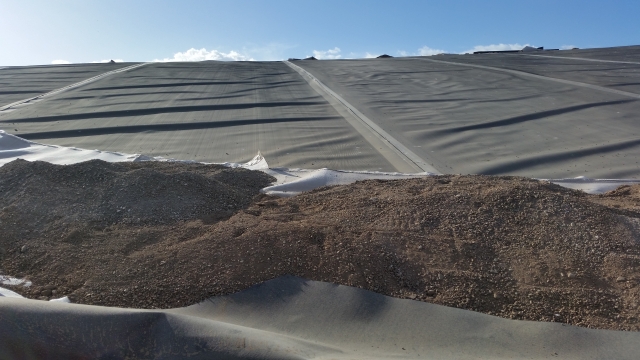
Geomembrane, a versatile material that has revolutionized various industries, is gaining popularity for its multitude of applications. Its remarkable attributes and cost-effectiveness have made it an indispensable component in numerous construction and environmental projects. From landfills to reservoirs, geomembrane plays a vital role in ensuring the efficient management of resources and protection of the environment.
One of the leading manufacturers and suppliers in the industry is bpmgeomembrane, based in China. With a solid reputation since its establishment in 2010, bpmgeomembrane has been at the forefront, providing high-quality geomembrane solutions for diverse projects worldwide. With an unwavering commitment to innovation and customer satisfaction, they have designed and developed geomembrane products that meet the highest standards of durability, impermeability, and versatility.
This article will delve into the wide-ranging applications of geomembrane, shedding light on how it has revolutionized the construction, mining, agriculture, and waste management sectors. We will explore the benefits and advantages of utilizing geomembrane in various projects, offering insights into the ways it contributes to sustainable development and environmental protection. So, buckle up and prepare to be amazed as we uncover the vast possibilities and remarkable applications of this extraordinary material known as geomembrane.
Environmental Protection Applications
-
Landfills: Geomembranes play a vital role in safeguarding the environment when it comes to managing waste. By serving as an impermeable barrier, they prevent harmful leachate from seeping into the soil and contaminating groundwater sources. Landfills lined with high-quality geomembranes provide a reliable solution for waste containment, reducing the risk of pollution and protecting our ecosystems.
-
Wastewater Treatment: Geomembranes are extensively used in wastewater treatment facilities due to their excellent chemical resistance and impermeability. They are employed as liners for containment ponds, lagoons, and tanks where wastewater is stored or treated. The reliable performance of geomembranes helps to prevent the seepage of hazardous substances into the surrounding environment, ensuring the safe disposal and treatment of wastewater.
-
Mining: The mining industry often deals with large volumes of potentially toxic materials and chemicals. Geomembranes find applications in mining operations as liners for tailings ponds and impoundments, helping to prevent the release of contaminants into the surrounding soil and water sources. These durable barriers contribute to environmental protection by minimizing the impact of mining activities on ecosystems and nearby communities.
Construction Applications
Foundation Liners
Geomembranes are widely used in construction for their excellent impermeable properties. One of the primary applications of geomembranes is as foundation liners. These liners are installed beneath structures to prevent the seepage of water, chemicals, and other substances into the ground. By acting as a barrier, geomembranes protect the foundation of buildings, highways, and other infrastructure projects from potential damage caused by moisture and corrosive elements.
In addition to protecting the foundation, geomembrane liners also help in stabilizing the soil. By preventing the loss of moisture, they ensure that the soil remains compact and stable, reducing the risk of settlement and maintaining the structural integrity of the construction. Moreover, geomembranes can resist the effects of temperature variations and soil movements, making them a reliable choice for foundation liners in various construction projects.
Landfill Liners
Another significant application of geomembranes in construction is their use as landfill liners. With the increasing need for waste management and environmental protection, geomembranes play a crucial role in containing and isolating potentially harmful substances within landfills. These impermeable liners effectively prevent the leaching of contaminants into the soil and water table, safeguarding our ecosystems and preventing pollution.
Geomembrane liners used in landfills are carefully engineered and designed to withstand the harsh conditions and aggressive contents typically found in waste disposal sites. They provide an impermeable barrier that ensures the containment of hazardous materials, preventing their migration and potential contamination of surrounding areas. Additionally, geomembranes contribute to the long-term stability and sustainability of landfills by reducing the risk of groundwater contamination and soil degradation.
Pond and Canal Linings
Geomembranes are also extensively employed in the construction of ponds, reservoirs, and canals. These liners are used to create impermeable barriers that prevent water seepage and ensure effective water management. By preventing water loss through seepage, geomembranes help conserve water resources and provide a reliable solution for irrigation, aquaculture, and various industrial processes.
The versatility of geomembrane liners enables their use in various types of ponds and canals, including recreational ponds, wastewater treatment ponds, and agricultural irrigation canals. They are designed to withstand prolonged exposure to water, resist chemical degradation, and maintain their impermeability even in demanding environments. Geomembranes offer an efficient and cost-effective solution for water containment and are increasingly being utilized in the construction of sustainable water infrastructure worldwide.
Agricultural Applications
Geomembrane has found extensive use in various agricultural applications due to its versatility. Its impermeable and durable properties make it an ideal choice for ensuring proper water management, protection of crops, and prevention of soil erosion.
One major application of geomembrane in agriculture is in the construction of reservoirs and ponds. These structures are crucial for water storage and irrigation purposes. By lining the bottom and sides of the reservoirs with geomembrane, water seepage is prevented, ensuring that farmers have a reliable water supply throughout the year. This helps to sustain crop growth and improve agricultural productivity.
In addition to water storage, geomembrane is also widely used in the construction of canals and ditches. By incorporating geomembrane liners, seepage of water from canals and ditches is minimized, ensuring efficient water distribution for irrigation purposes. This not only helps in conserving water resources but also enhances the effectiveness of irrigation systems, leading to improved crop yields.
Another significant agricultural application of geomembrane is its use in the construction of silage pits and storage facilities. Geomembrane liners are employed to create an impermeable barrier, preventing the leaching of silage effluents into the soil and groundwater. This helps in maintaining the quality of the silage and prevents environmental contamination. Moreover, the use of geomembrane in silage storage facilities ensures proper anaerobic conditions, preserving the nutrients and enhancing the feed value of the silage.
In conclusion, geomembrane plays a vital role in facilitating water management, soil protection, and crop productivity in various agricultural applications. Its impermeability and durability make it an ideal solution for constructing reservoirs, canals, ditches, and silage storage facilities. By employing geomembrane, farmers can enhance their agricultural practices, leading to sustainable and efficient farming systems.





